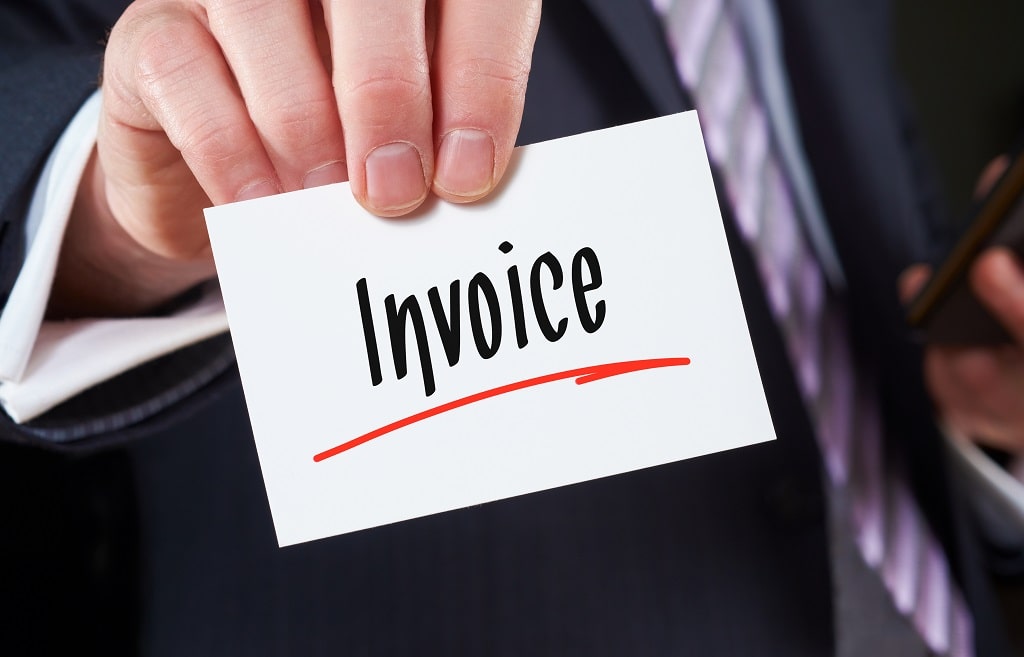Table of Contents
Updated by 02.15.2024
How to Explain a Bill to a Customer
Communicating with customers about bill payments can be a sensitive arena to navigate. Money is personal, and your customers most likely have strong feelings about electronic billing, mainly if their bill is larger than expected, their payment is overdue, or if there are multiple barriers during the payment process.
9 Customer Service Tips for Explaining Bills to Customers

When building up and managing a team of payment representatives, remember that exceptional customer service in this area will significantly impact payment collections and increase client loyalty.
Billing cycle representatives should communicate with customers in a way consistent with the organization’s long-term objectives and payment plans.
Below are some tips on how to explain a bill to a customer to ensure your billing representatives help customers in a way that builds your business over the long term.
1. Don’t Ask for the Client’s Information Twice
Pay attention to your customers’ time. Suppose you have a system that requires customers to give the same information multiple times, such as the last four digits of their social security number. It may indicate different parts of your business are not collaborating or communicating.
Ensure you have a payment processing system that communicates this information quickly throughout the organization and between coworkers. Not only will this make your customers happy by saving them from having to repeat themselves, but it will also allow your organization to receive more calls quickly and, as a result, increase payment collections.
2. Agree on Payment Terms Before You Start
You and your customers should agree on a set of terms expressed clearly and concisely, devoid of industry jargon that’s difficult to understand.
When creating an invoice for the customer, use plain English instead of industry-specific terms. For example, instead of writing “Net 30” for the due date, just write the exact date the invoice is due.
If you find that your customer’s payment terms differ from yours, notify them and request that they accept yours. It may be possible to negotiate terms, such as altering staged payment dates. Be sure to document any changes in writing.
If your customer refuses to change their terms, you have two options. You can either decline the order or job or accept it while understanding its impact on your cash flow.
A word of caution: Sneaking payment terms into the small print of a contract can be an unethical and unfair business practice, as it forces customers to agree to terms they may not be aware of until it is too late. This can cause serious financial and legal consequences for the customer and damage the business’s reputation. Always be transparent and upfront.
3. Know How to Explain the Details of the Bill

Be prepared to give a reason for every charge on a bill, especially if there are multiple fees. Clear communication is vital to customer loyalty. Customers are much more likely to pay a larger bill on time if they understand what they are paying for.
Building trust between your organization and your customer this way facilitates increased payments over the long term, as a client will know what they see on the bill has a good reason for being there.
To uphold this requirement throughout your business, internal training is essential to guarantee that each client representative understands the exact way your company charges customers and the structure of the invoices on paper.
Small business owners must ensure their billing agents are familiar with their goods and services and the explanations for specific fees or penalties.
4. Speak Like a Human
Creating a meaningful business relationship with customers is essential to foster brand loyalty. This requires employees to go beyond reading from a script and speaking in a monotone voice. Instead, they should practice speaking with empathy, patience, and appreciation for each customer’s situation.
To improve a customer call:
- Be clear and concise
- Use your natural tone of voice.
- Customers want an explanation but don’t need to know all the details.
- Always end with, “Is there anything else I can do for you today?”
- And communicate hold times.
Provide the billing team opportunities to practice speaking with each other and give feedback. Furthermore, organizations should focus on short-term gains (such as collecting a payment) and consider how the customer will feel after interacting with the company. These considerations create brand ambassadors and yield long-term results.
5. Be Empathic to Your Customers
Empathy for another person does not necessarily imply agreement but rather an appreciation for their point of view. This is an invaluable quality for support staff, as they must constantly interact with customers from diverse backgrounds, resolve their issues, and ensure that the company is represented positively for a positive customer experience.
Always take the time to hear out the customer. Be aware of customer fears, such as “If my bill is this high in September, I dread to think what it will be like in January. I may not be able to pay if it keeps rising!”
Listening to the customer’s worries is vital to calming the intense emotions that often accompany complaints about high bills. People don’t always voice their fears right away. Keep asking questions to get more details. Before you examine the potential causes of a high bill or suggest solutions, reiterate what the customer has said to ensure you understand all their worries.
6. Provide Information About Financial Assistance Programs

For some businesses and organizations, making it easier for customers to access financial assistance is essential. To ensure those with limited resources have the help they need, consider streamlining program applications and verifying income. This makes it easier for customers to sign up for the required financial assistance.
Additionally, provide customers with information about all the types of assistance available to them and help match them to the right program. By implementing these strategies, customers with limited financial resources can effectively pay their bills, while businesses cultivate trust and loyalty.
7. Set Up Clear Invoices
Having properly formatted invoices can make it much easier to get paid promptly since there will be no issues caused by missing or unclear information. Presenting an invoice with all the necessary details shows customers and clients that you are professional and organized. On the other hand, sending an invoice with mistakes or that needs more detail reflects poorly on you.
Here are some ideas to consider while producing an invoice.
- Use white space – Don’t cram too much information into a tight space. It can be overwhelming and difficult to see the most relevant information.
- Ensure your text is legible – Use a font that’s easy to read and make the text big enough that it’s legible at a glance.
- Include essential information – the invoice number, date, payment terms, client’s name, contact information, a detailed description of the products or services provided, and the total amount owing.
- Use basic language – Avoid jargon or technical words that may confuse your clients.
Some companies send customers email billing instructions to quickly and easily communicate important billing information. This makes customers aware of the due date, payment amount, and other relevant details, reducing confusion. What’smore sending billing information via email can help companies save money by eliminating costly paper statements and postage.
8. Make the Payment Process Easier
By providing various payment options, companies can cater to individual shoppers’ needs, providing a convenient experience they will value. Unsurprisingly, small businesses offering multiple payment options increase revenue by nearly 30%.
In today’s world, businesses must offer various payment options to customers if they want to remain competitive. Money orders, debit/credit cards, mobile payments, SMS, email, and over-the-phone payments are standard.
Multiple payment forms can benefit businesses by retaining current customers, attracting new ones, growing sales, keeping cash flow going, and saving money on fees.
9. Follow Up After Missed Payments

Businesses want to avoid late payments, which can lead to uncomfortable conversations and strained client relationships. You mustn’t shy away from this issue; you have done work that deserves compensation.
Wondering how to properly invoice clients who pay late? Start by gently contacting the client if a payment is missed, as it could be a simple mistake or a result of a cash flow problem. That’s why knowing how to explain a bill to a customer is so important.
If they still don’t pay, it’s time to send a friendly reminder that you’ll be reporting it to a credit agency if they don’t pay. If you still need to receive payment after you’ve reported it, call and remind them that late fees will be added to their following statement.
Should a pattern of late payments persist, consider terminating the client relationship.
Use Invoicing Software
How to invoice a client for services? Use software! In the past, sending invoices took a long time due to printing and mailing them to customers. Nowadays, invoice software has made it much faster and more efficient; customers can receive invoices in seconds.
For many large enterprises and small business owners, invoicing software offers a bunch of advantages, such as:
- Improve data accuracy: Built-in AI saves time and reduces the risk of human error in data entry.
- Simplify payment and invoice tracking: Set up automatic alerts when customers owe you money or it’s time to send an outstanding invoice and never miss a payment.
- Eliminate duplicate data entry: Customers’ orders are processed automatically and instantly, reducing the likelihood of data duplication and other errors arising from manual invoicing.
- Optimize resources: Gain insights into sales operations and optimize resources for greater profit margins.
- Better customer service: Keep up-to-date data and give your sales team the resources and information needed to enhance the customer experience.
- Eco-friendly: Now more than ever, taking care of our planet is important. Instead of printing hundreds of invoices and reports, invoice software lets you keep all your records digitally, and provides easy-to-use invoicing templates.
Find the Best Platform for Your Business with E-Complish
Having the right billing software goes a long way toward creating a smooth billing process. It allows businesses to automate the tasks associated with invoicing and payments, such as creating invoices, sending payment reminders, and tracking payments.
Automation streamlines the entire billing process and reduces the time and effort required to manage it. It also eliminates potential errors, such as incorrect billing information, and simplifies accounts receivable reconciliation. Additionally, the right billing software can provide useful insights into customer behavior, allowing you to make smarter decisions about their billing processes.
We hope you’ve found these tips on how to bill a client useful. If you’re looking for payment processing software that empowers your business then we can help. E-Complish offers one of the best 360-degree payment processing solutions customized to your business needs. Contact us today to learn more!
Table of Contents


